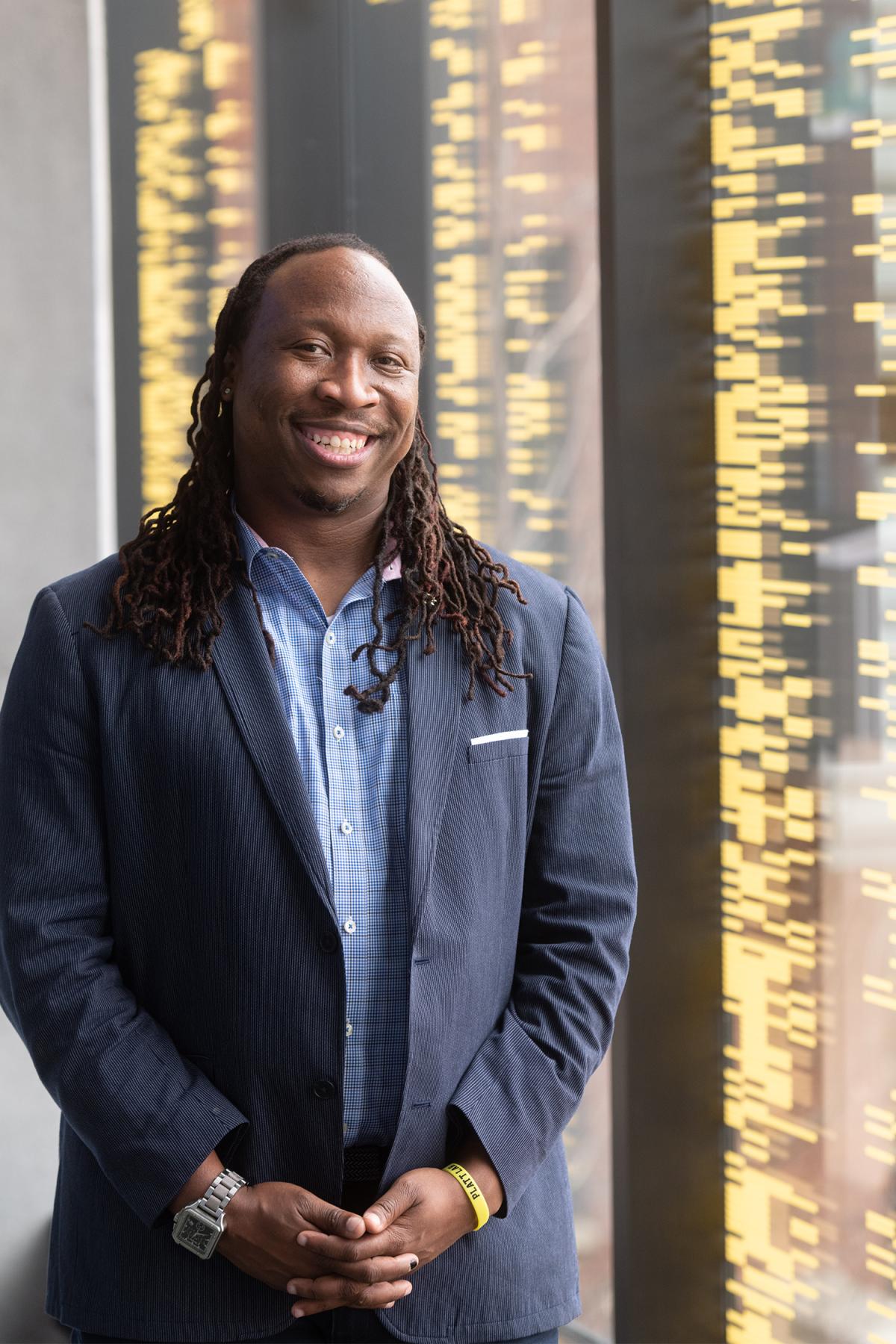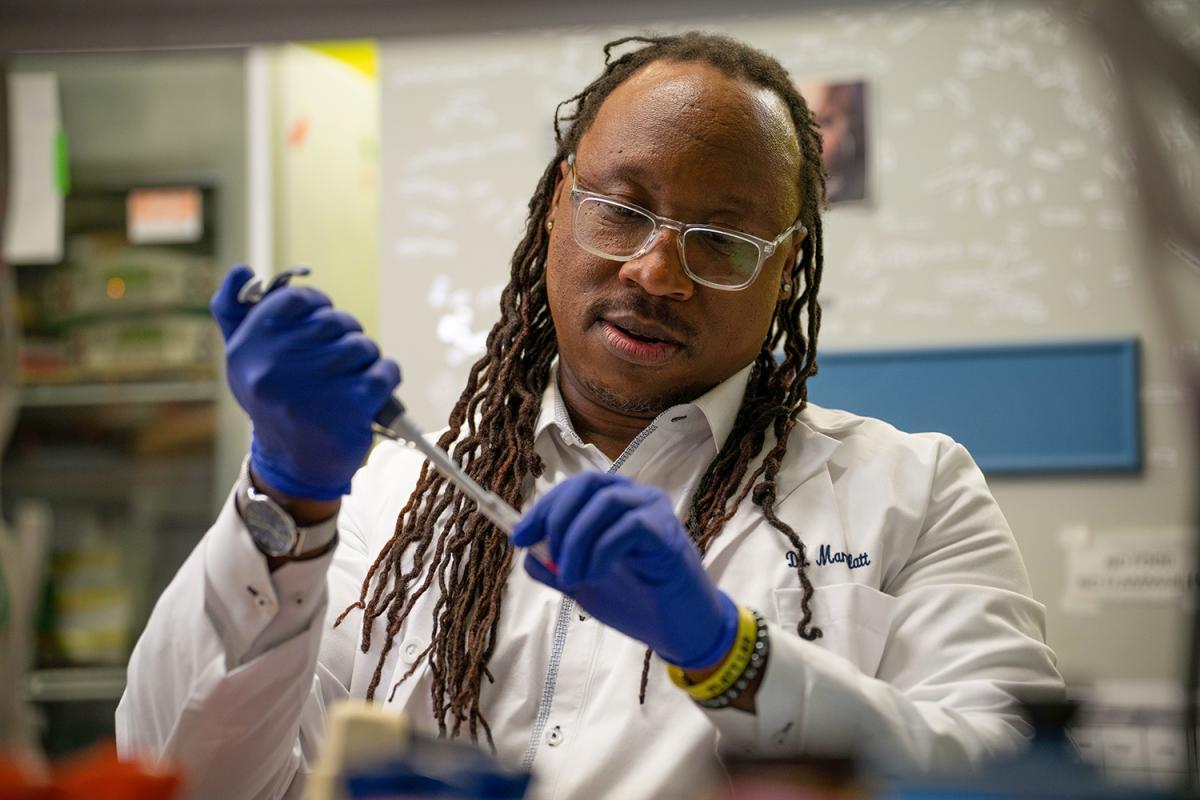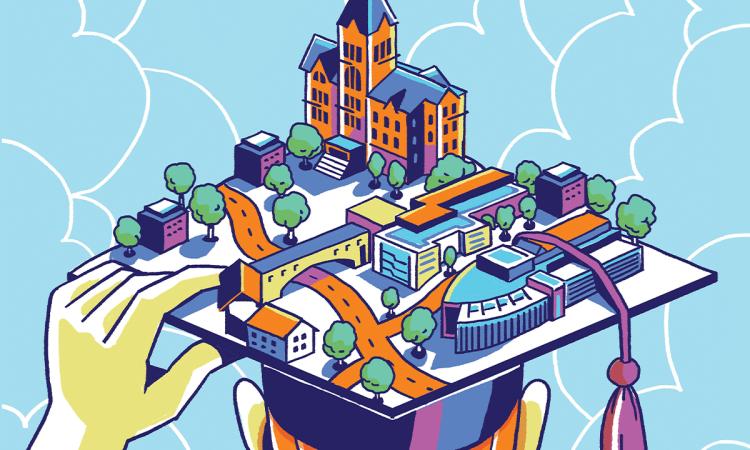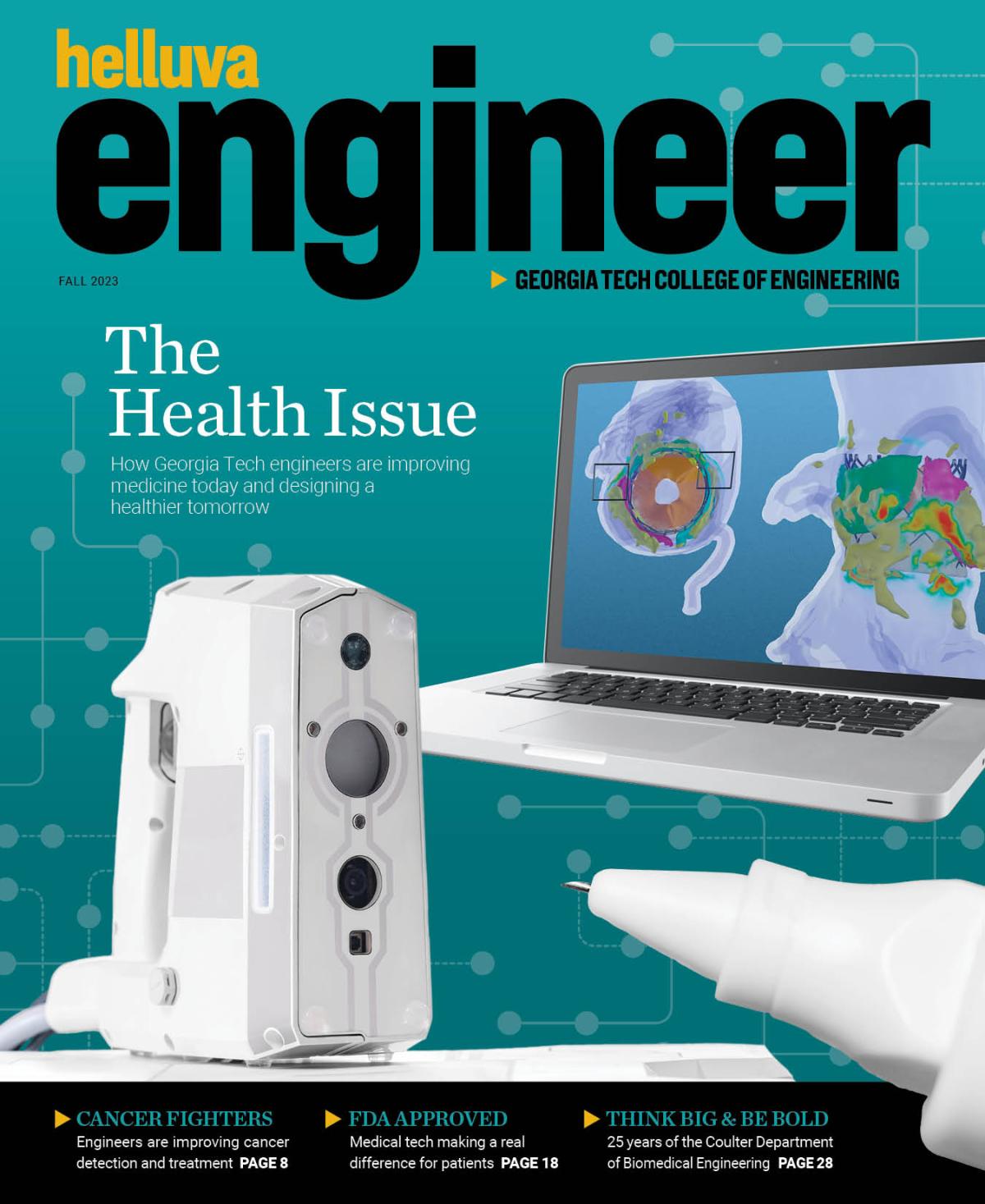Manu Platt, Ph.D. BME 2006, was a member of the second class of Ph.D. students in the Wallace H. Coulter Department of Biomedical Engineering and eventually returned to the faculty for more than a decade. In 2023, Platt was named founding director of the new Center for Biomedical Engineering Technology Acceleration (BETA) at the National Institutes of Health (NIH).
(text and background only visible when logged in)
1. What is the new BETA Center?
The BETA Center is an NIH-wide resource housed by the National Institute for Biomedical Imaging and Bioengineering that will serve as a new NIH model for accelerating technology-driven interdisciplinary research and clinical translation. The BETA Center will bring together researchers with expertise including biomedical imaging, biosensing, biomechanics, engineered/synthetic biology, nano/biomaterials, artificial intelligence, modeling, computation, and informatics.
2. What are your biggest dreams for the center?
There is so much potential for innovation due to the nature and flexibility of the NIH’s intramural program, the quality of investigators across NIH, and access to patients and clinical trials. I want to bring more researchers from the outside to the NIH campus. Diversifying and supporting investigators across NIH would also be an important achievement. The possibility of America is that we are able to pull from individuals from so many backgrounds, countries, cultural insights, and challenging upbringings. When we capitalize and value that grit and experience, we can be truly disruptive in our approaches to health, disease, and treatment.
3. How are you shaping your own research at NIH?
Up to 10% of NIH’s budget goes toward research done on NIH’s campus — what we call the intramural research program. This opens the opportunity to develop new ideas at the fringes of multiple established areas. My research questions have always been at the edge of one field and touching another. For example, even though I study sickle cell disease, which is a mutation in red blood cells, I study the tubes and cardiovascular aspects, not the hematological aspects. I also love cathepsins, a group of enzymes that are involved in a number of tissue-destructive diseases that are a bit difficult to study because of their structure and location inside of cells. That’s biochemistry and cell biology, but I look at them from a systems biology perspective using mathematical modeling and experimental tools.

Platt (Photo: Allison Carter)
4. How did sickle cell disease become a key focus area for you?
My mother used to talk about it, because she was in high school when they started testing everyone for sickle cell under a program President Nixon started. Plus, it predominantly affects African Americans in the U.S. I had been studying mechanisms of stroke during my Ph.D., but for people in their 60s, 70s, or 80s. When I learned that young children with sickle cell disease were having strokes, I was shocked. So, we began to investigate.
5. What’s the next big advance in treating people with sickle cell disease?
There’s major movement in gene therapy to change the DNA of people with this genetic mutation to provide a functional cure. Big challenges remain, though, in making sure the corrected hematopoietic stem cells go to the bone marrow, make a home for themselves, and are able to produce enough blood cells.
6. Why did you choose the Georgia Tech-Emory partnership for your Ph.D. studies?
My senior year at Morehouse College I began working with Robert Nerem, founder of the Petit Institute for Bioengineering and Biosciences (IBB). The environment in IBB, the new BME department, the buzzing interdisciplinary nature of the research questions, and collaborations with Emory doctors all created an exciting atmosphere. This was also one of the first programs to accept life science students into a Ph.D. program alongside engineering students. I was into it!

(Photo: Alex Arbeiter / Street Ensemble Visuals)
“There were programs and opportunities that others spent time to run so that I could be exposed to experiences beyond what I could imagine. If you don’t know what you don’t know, then how are you to access it?”
MANU PLATT
7. We hear you originally wanted to work at NASA. What changed?
Physical forces controlling biology fascinated me, and changes our bodies would undergo in microgravity would need to be figured out for long-term space travel. I had NASA scholarships and internships during my undergrad. During my Ph.D., I received a NASA fellowship that came with more internship opportunities, and in summer 2005, I went back to Johnson Space Center in Houston. It was after the Columbia shuttle disaster. NASA had grounded the shuttles, and the life science budget had been largely redirected. What has always driven me about scientific research is the choice to pursue subjects I found interesting. That summer, I learned that NASA researchers had to wait for new research priorities from the government, which was devastating to the team I joined, and I knew that I would feel the same way. So, I decided it was not the right environment for me.
8. How has your own life and career influenced your efforts to expand access in STEM?
I am the first person in my family to earn degrees in science or engineering. Of course, there were family members who used science and engineering for generations, but navigating the formal pathway is different. There were programs and opportunities that others spent time to run so that I could be exposed to experiences beyond what I could imagine. If you don’t know what you don’t know, then how are you to access it? I am thankful to those who opened side doors, put me on conveyer belts, and shot me over rainbows to reach new heights, and it is only right to spend time and effort to do it for others.
9. What’s been your proudest accomplishment so far in your career?
The obvious, though corny, answer is my students. Watching them grow, develop, train their own students, and reach their goals is more rewarding than I would have imagined.
10. You lived in Atlanta for a long time. What do you miss most?
Direct flights to anywhere from Hartsfield-Jackson airport!
(text and background only visible when logged in)
Related Stories

Think Big and Be Bold
25 years after creating a powerhouse program between a public and private university, Georgia Tech and Emory’s biomedical engineering department looks ahead to its next chapter.

Helluva Engineer
This story originally appeared in the Fall 2023 issue of Helluva Engineer magazine.
With the top biomedical engineering program in the country, it’s only fitting that our rebooted College magazine focuses on health and medicine in our return issue. From cancer to anemia, synthetic biology to eye disease, Georgia Tech engineers are improving medicine today and designing a healthier tomorrow for us all.